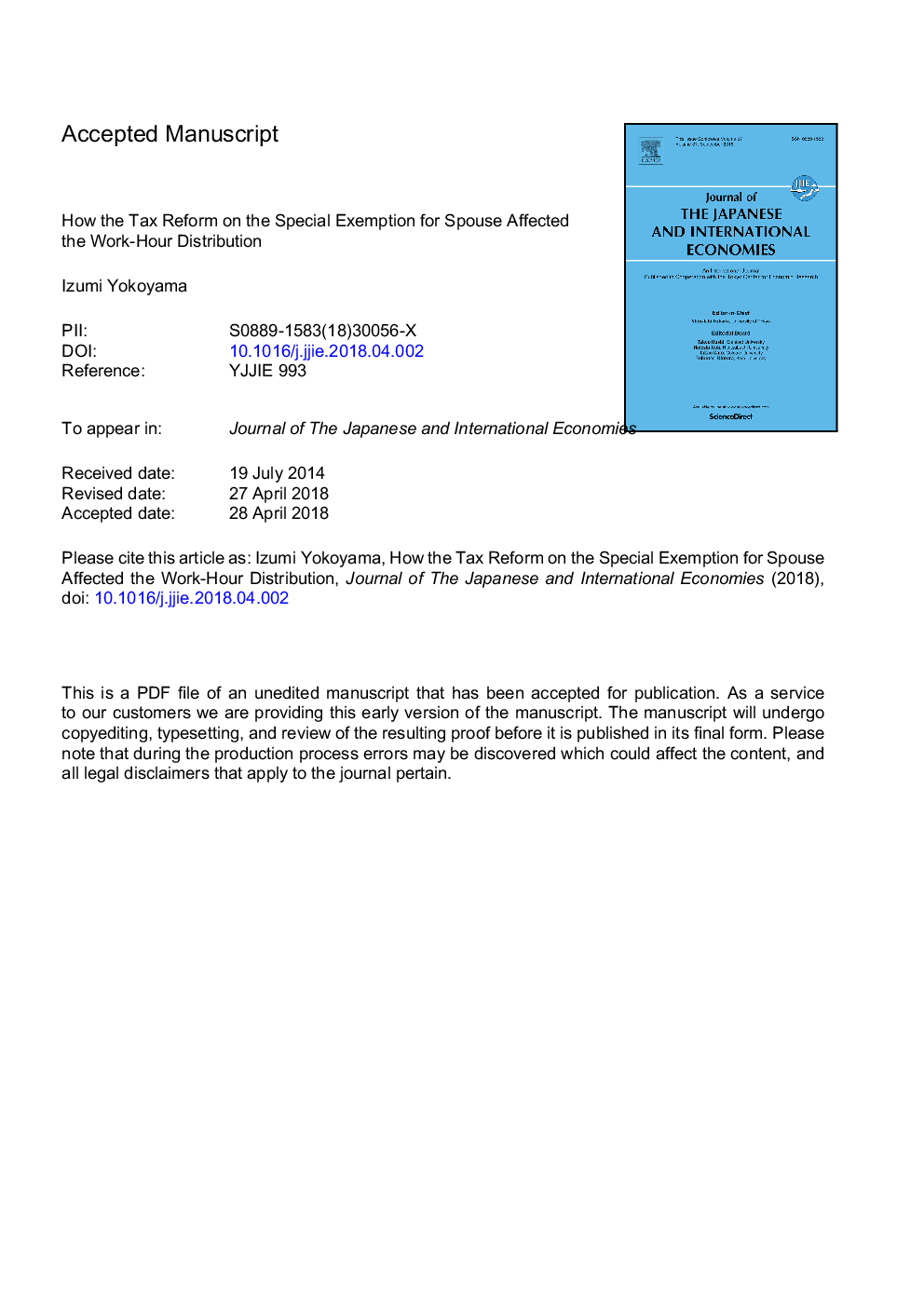| Article ID | Journal | Published Year | Pages | File Type |
|---|---|---|---|---|
| 8954596 | Journal of the Japanese and International Economies | 2018 | 19 Pages |
Abstract
Japan has a spousal exemption system in which the income exemption a husband can claim decreases as his spouse's income increases. Part of this exemption was abolished in 2004 to boost the labor supply of low-income married women. In this study, I examine how the 2004 tax reform in Japan affected the work-hour distribution of married women. The reform created a new kink at 1.05 million yen on the budget line, which made the conventional income threshold of around 1 million yen more evident. First, I theoretically show that this change in the shape of the budget line due to the tax reform could influence even medium- to high-income wives presumed to be unaffected by the tax reform. More concretely, under certain conditions, there are cases in which some medium- to high-income wives reduce their income to just below the conventional threshold when they experience some exogenous shocks that could discourage them from working long hours. Relatively new decomposition methods, as well as quantile difference-in-differences estimations, all confirm that the tax reform increased the work hours among low-income married women. In addition, some medium- to high-income married women greatly reduced their income to just below the conventional income threshold in response to an increase in their husbands' income after the tax reform. This evidence indicates that this behavior of medium- to high-income wives could be due to an enhanced awareness of the conventional income thresholds. It also implies the importance of knowing and understanding the potential impact of the tax reform on those who are not the target of it, as well as the conditions under which the discontinuous income drop among medium- to high-income wives is likely to occur.
Keywords
Related Topics
Social Sciences and Humanities
Economics, Econometrics and Finance
Economics and Econometrics
Authors
Izumi Yokoyama,
